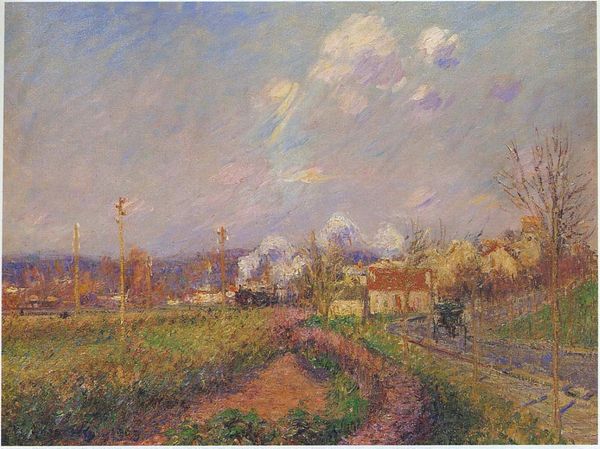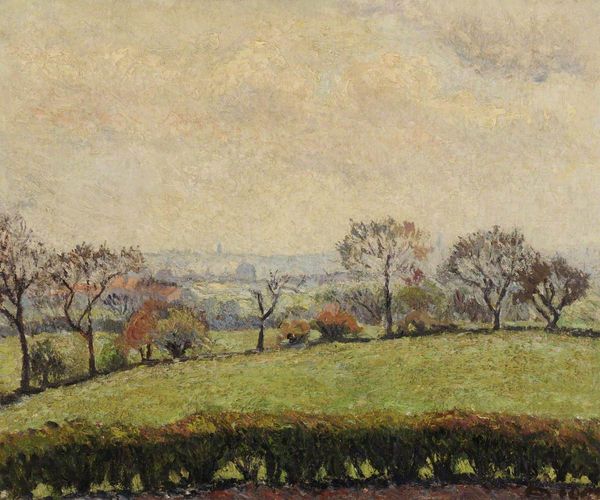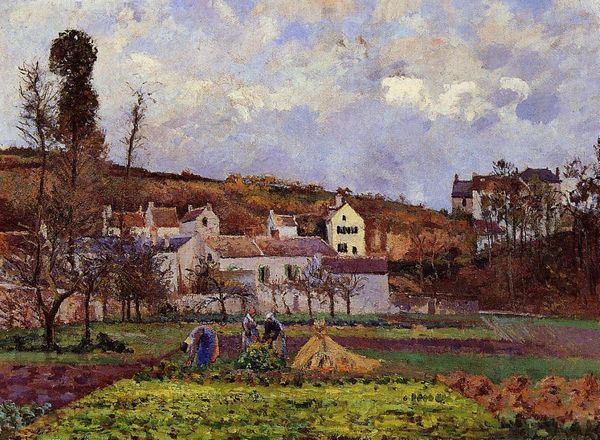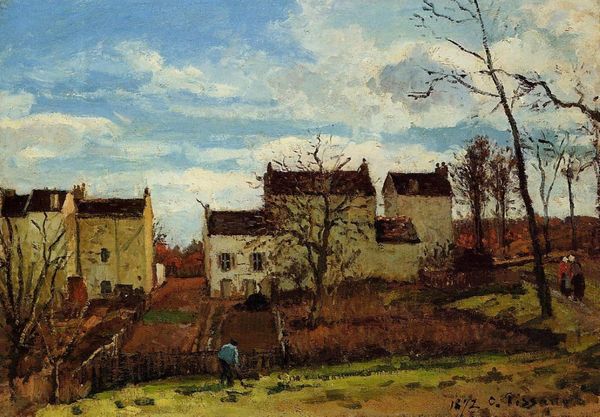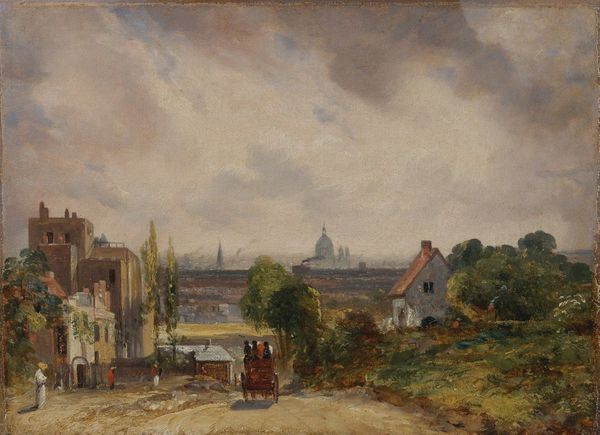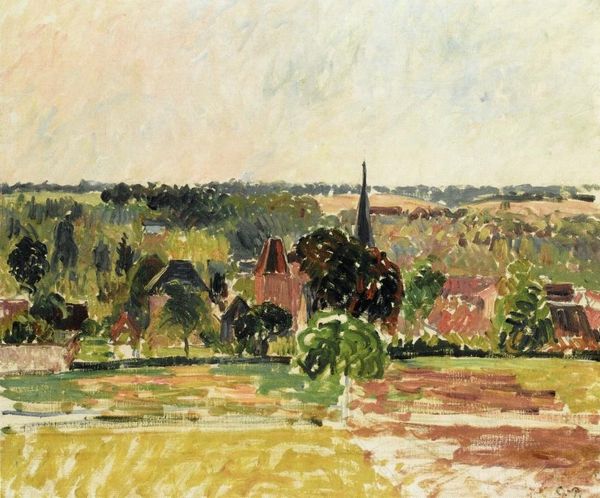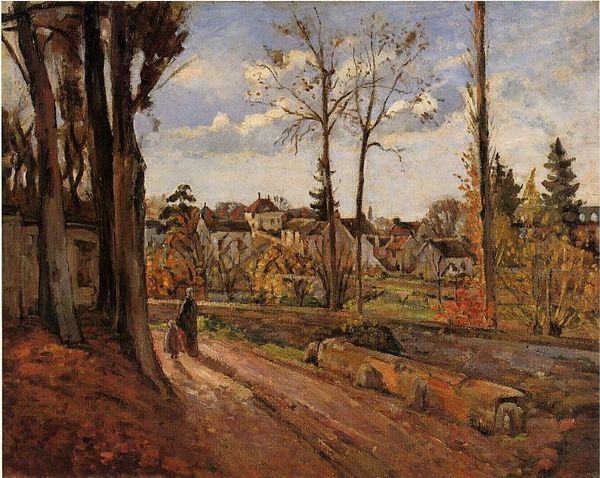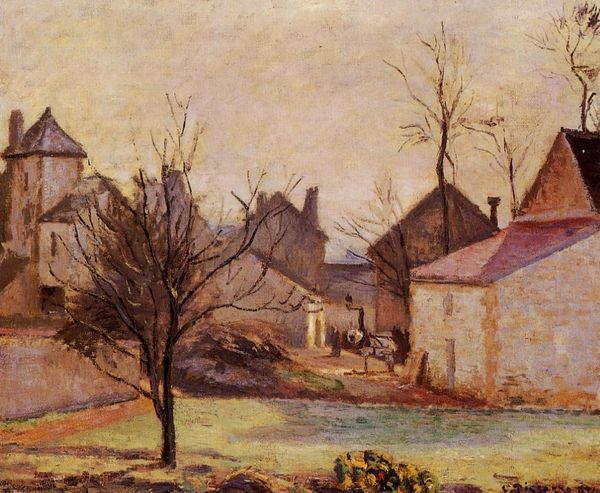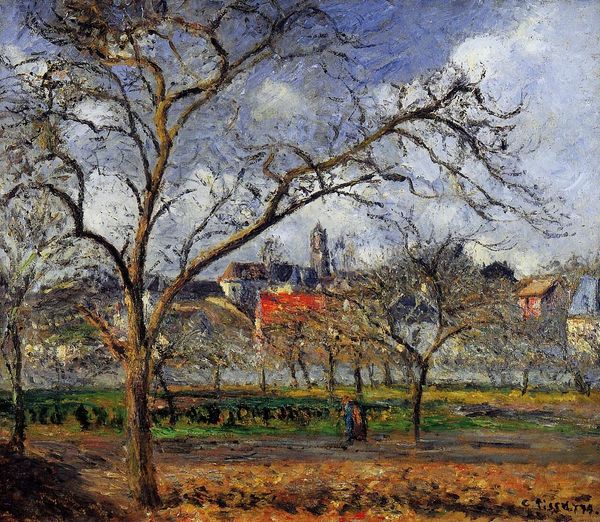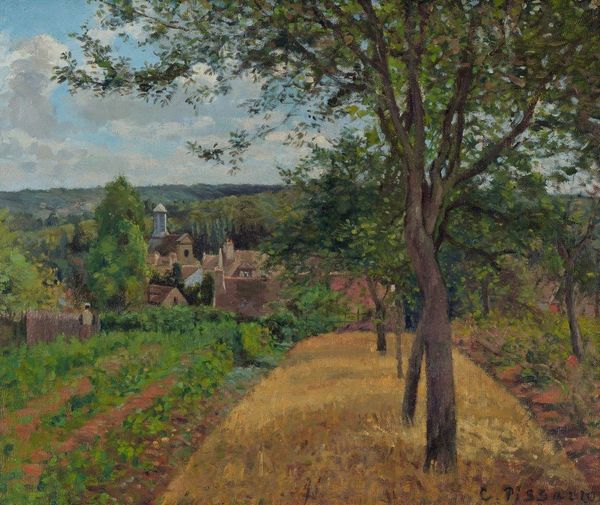
painting, plein-air, oil-paint
#
painting
#
impressionism
#
impressionist painting style
#
plein-air
#
oil-paint
#
landscape
#
impressionist landscape
#
oil painting
#
cityscape
Dimensions: 53 x 82 cm
Copyright: Public domain
Editor: This is "View of Pontoise" by Camille Pissarro, painted in 1873. It’s an oil painting showing a cityscape. It has a very grounded feel, very earthy, with muted colors. What do you see in this piece, beyond the landscape? Curator: I see a document of a specific time and place, but more than that, I see a statement about labor and landscape. Consider the year, 1873. France was undergoing massive social and economic upheaval, the rise of industrial capitalism dramatically altered life. How do you think Pissarro, with his anarchist leanings, is responding to these changes here? Editor: So, you're saying the seemingly simple scene is politically charged? Maybe the way the workers blend into the landscape shows a kind of unity, or perhaps their subjugation? Curator: Exactly! The Impressionists were not just painting pretty pictures. Pissarro was deeply concerned with social justice, with class differences. And notice how the church spire dominates the skyline, a subtle reminder of established power structures. Think about who owns the land, who benefits from the labor... Editor: It's interesting to see how the style of Impressionism, usually focused on light and color, can also carry this weight of social commentary. I hadn't thought of it that way before. Curator: And consider, too, the very act of painting 'en plein air', outside, amongst the workers and the fields, was itself a political statement, a claiming of space and solidarity. Does understanding that shift how you see the artwork? Editor: Definitely! It makes me think more critically about the artist's position and what he's trying to communicate about the society he lived in. Curator: And hopefully, it encourages us to continue to question what power structures and dynamics shape our world today, and how art can challenge those constructs. Editor: Absolutely, this has broadened my perspective, thank you!
Comments
No comments
Be the first to comment and join the conversation on the ultimate creative platform.
